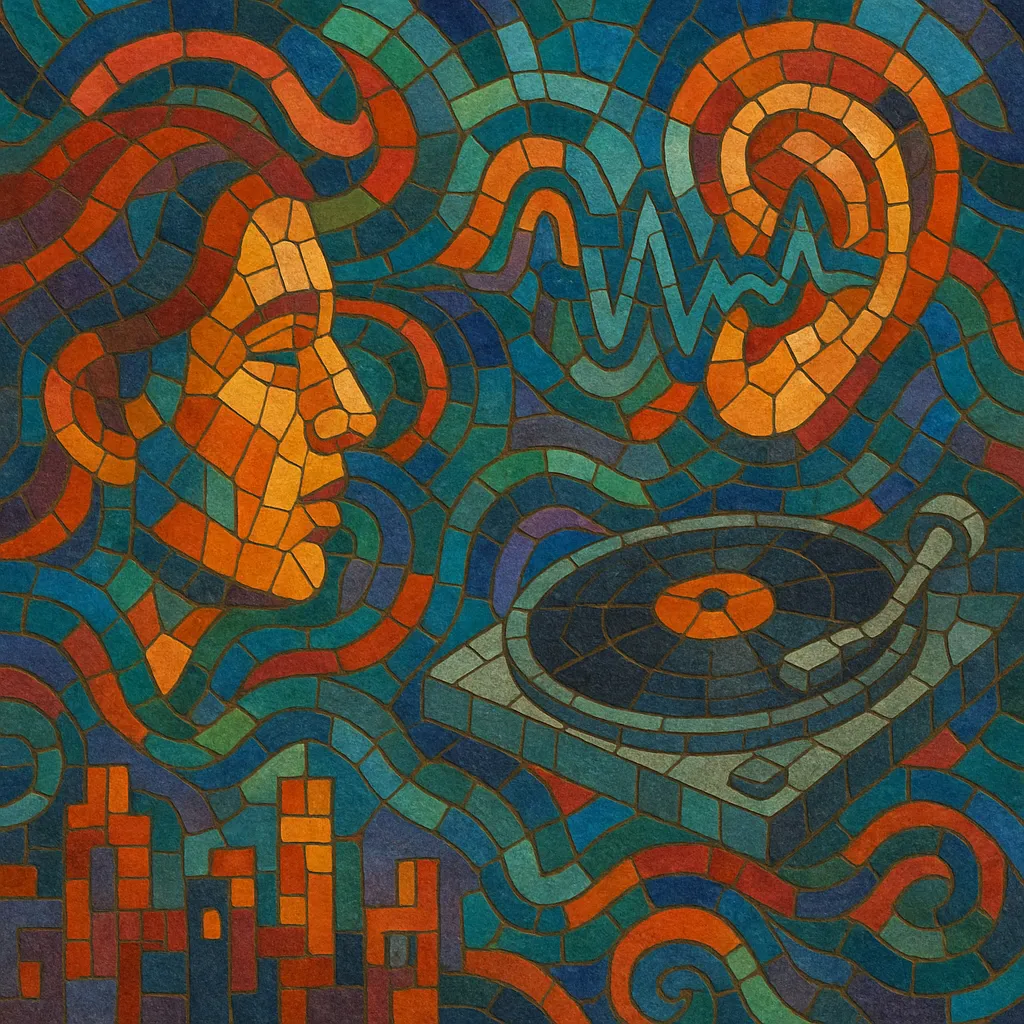
Sampledelia is a sample-centric, psychedelic approach to electronic and pop-oriented production in which pre‑existing recordings are chopped, looped, layered, and recontextualized into dreamlike collages.
It favors crate‑dug fragments of library music, exotica, easy listening, film dialogue, radio idents, and forgotten pop, weaving them with breakbeats, ambient pads, and found sounds to create a kaleidoscopic, nostalgic haze.
Unlike traditional hip hop beatmaking that foregrounds MCs, sampledelia often leans instrumental or uses voices as textural elements—snippets that drift in and out—emphasizing mood, memory, and playful surrealism over linear songwriting.
The result is music that feels both familiar and uncanny: buoyant, whimsical, and danceable, yet distinctly wistful and cinematic.
Sampledelia grew from the rise of affordable samplers (E-MU SP-1200, Akai S950/MPC60) and a cultural moment that embraced cut‑and‑paste aesthetics. UK acts such as The JAMs/The KLF and Coldcut pushed audacious, collage-like sampling, while ambient house (The Orb) explored long-form, sample-rich soundscapes. Across the Atlantic, Negativland’s culture-jamming and the Bomb Squad’s dense, sample-stacked productions for Public Enemy set technical and conceptual precedents.
By the mid‑1990s, the approach coalesced into a recognizably psychedelic, sample-forward style. DJ Shadow’s “Endtroducing…..” (1996) demonstrated an album-length, fully sample-based journey, while Ninja Tune’s roster normalized painterly montage and turntablist craft. The term “sampledelia” circulated in music press as a convenient label for this kaleidoscopic, memory-soaked collage.
The Avalanches’ “Since I Left You” (2000) became an emblem of sampledelic maximalism, showcasing thousands of micro-samples as breezy pop. Artists like Lemon Jelly and The Go! Team combined cheerful hooks with crate-dug textures. As DAWs matured, intricate editing, time‑stretching, and restoration tools made deeper archival mining possible—even as sample clearance challenges shaped what could be officially released.
The streaming era and online archives amplified crate-digging, inspiring adjacent microgenres (vaporwave, hypnagogic pop, barber beats) that inherit sampledelia’s nostalgic glow and surreal edits. Lo‑fi hip hop adopted its tape-worn warmth and melodic fragments, while experimental scenes continued to blur boundaries between sound art and pop collage. Today, sampledelia persists both as a distinct practice and as an aesthetic toolkit embedded in contemporary electronic and beat music.

